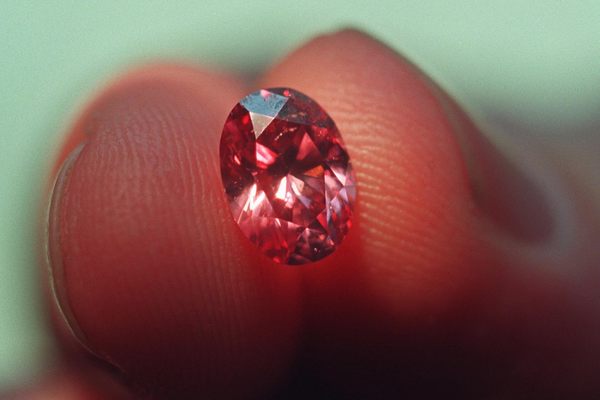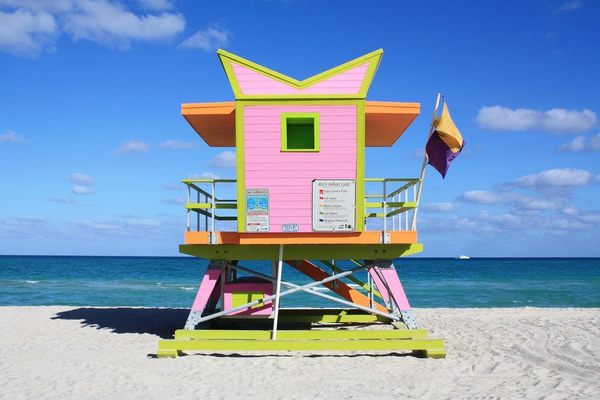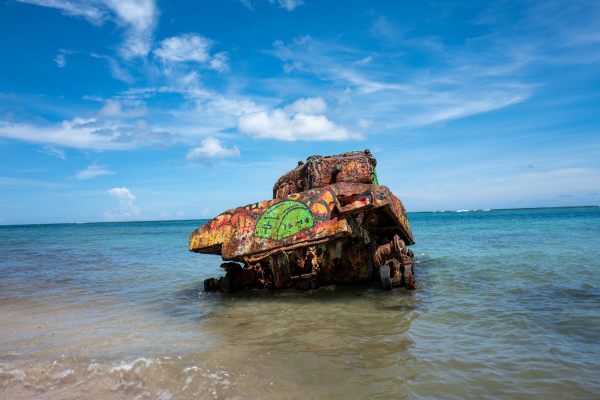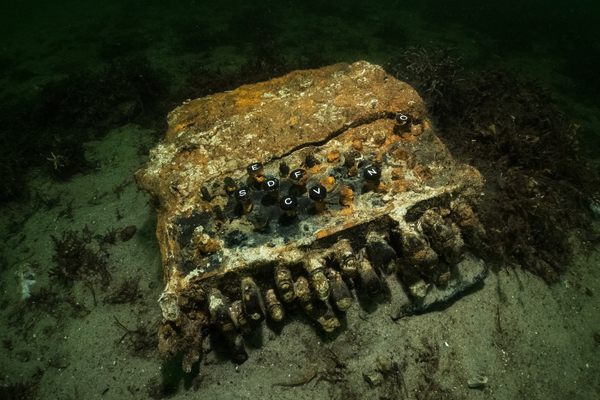Found: Glass Fallout From the Atomic Bombing of Hiroshima
The particles have covered nearby beaches, unnoticed, for nearly 75 years.

The American military’s atomic bombing of Hiroshima on August 6, 1945 “was the worst manmade event ever, by far,” according to the geologist Mario Wannier. “You have a city, and a minute later you have no city.” At least 70,000 people were killed by the initial impact; the final death toll, accounting for radiation, could surpass 145,000. Wannier and his colleagues recently stumbled upon tiny remnants of this massive event on the beaches of Japan’s Motoujina Peninsula. These glass particles formed out of the explosion, and have resided on nearby beaches ever since. They published their findings this week in the journal Anthropocene.
Wannier had been studying beach debris from different areas in order to compare the health of different marine ecosystems, when some particles from the Motoujina Peninsula struck him as unusual. Next to particles generated by plants or animals, these were “aerodynamic, glassy, rounded”—they reminded him of what he had seen in sediment samples from the Cretaceous-Paleogene (K-Pg) boundary, the geological marker of the mass extinction that erased the dinosaurs around 66 million years ago. Research suggests that the mass extinction was triggered by meteorite impact, which would have ejected ground materials into the atmosphere that descended back down as glass.

But these particles from the Motoujina Peninsula were also notably different in several ways from the K-Pg particles: Some were rubbery, others had multi-layered glass shells. The variety reflected the wide range of materials present in the particles, identified under electron microscope at the University of California, Berkeley. X-ray experiments were also conducted at Lawrence Berkeley National Laboratory, which proved useful in analyzing the formation of the debris.* The range of materials is just one indication that the particles formed as a result of the Hiroshima bombing. An urban center presents a wider variety of materials—such as concrete, marble, stainless steel, and rubber—than a desert test site like Trinity, in New Mexico, where the first-ever nuclear explosion was tested. The resulting particles from that test, called trinitites, are notably less diverse in their composition than what Wannier and his colleagues are now calling “Hiroshimaites.” The presence of anorthite and mullite crystals in the particles, meanwhile, suggested that they had formed in temperatures hotter than 3,300 degrees Fahrenheit, or 1,800 degrees Celsius.
While even this cannot capture the scale of the destruction, the researchers estimate that there are between 2,200 and 3,100 metric tons of the particles per square kilometer of the beach area (if the sand is measured from the surface and down to four inches below). Wannier says that this is the first time that they have been studied in detail since the bombing took place nearly 75 years ago.
*Update (5/17): This story has been updated to include additional information on the process of identifying the particles and assessing their formation.





















Follow us on Twitter to get the latest on the world's hidden wonders.
Like us on Facebook to get the latest on the world's hidden wonders.
Follow us on Twitter Like us on Facebook